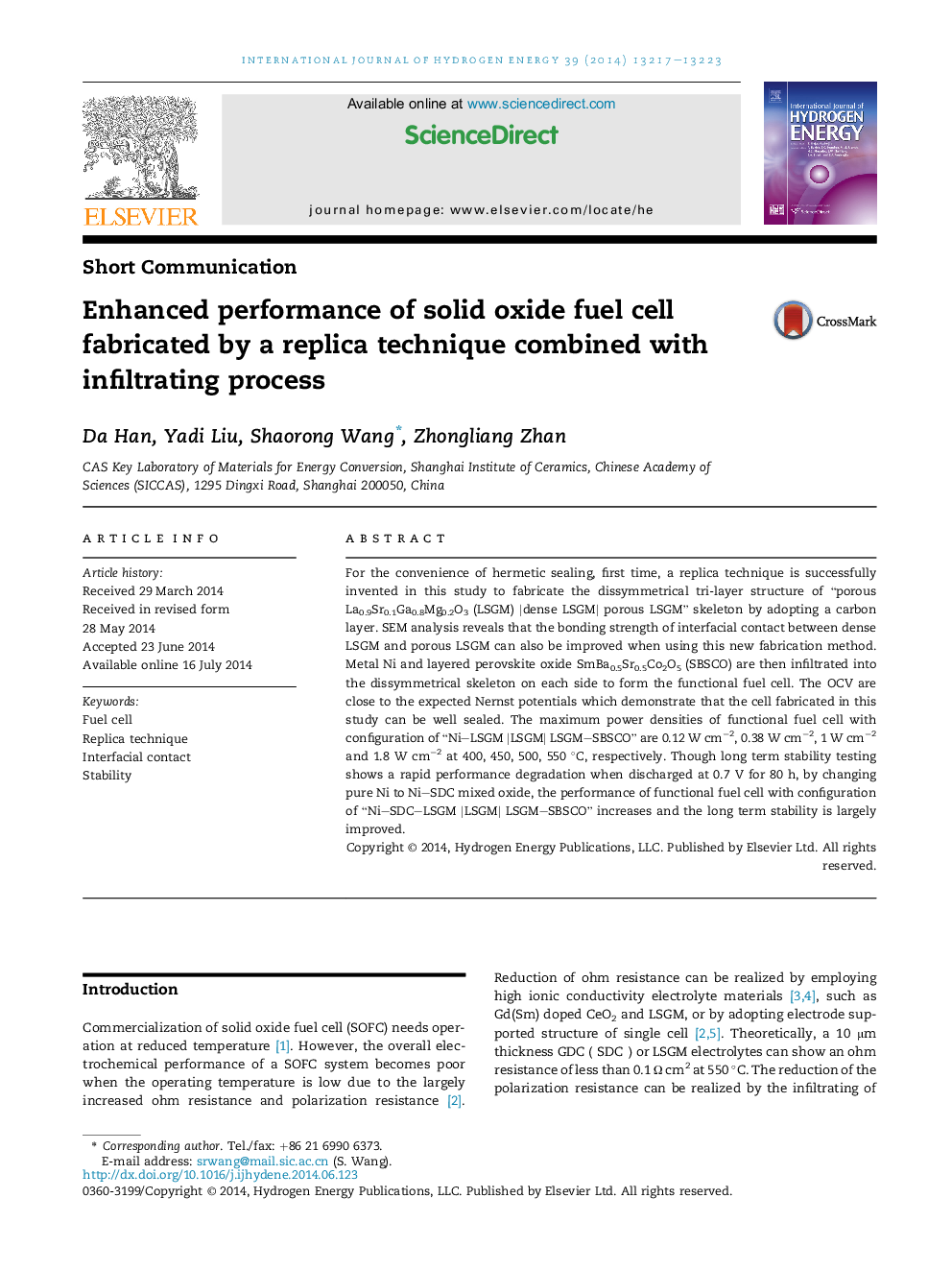| Article ID | Journal | Published Year | Pages | File Type |
|---|---|---|---|---|
| 1272609 | International Journal of Hydrogen Energy | 2014 | 7 Pages |
•High performance functional fuel cells were fabricated by a novel replica technique combined with infiltrating process.•Maximum power densities of 1.8 W cm−2, 1 W cm−2, 0.38 W cm−2 and 0.12 W cm−2 at 550 °C, 500 °C, 450 °C and 400 °C were obtained.•An almost constant current density of 1.14 A/cm2 at 500 °C was achieved when discharged at 0.7 V for 80 h.
For the convenience of hermetic sealing, first time, a replica technique is successfully invented in this study to fabricate the dissymmetrical tri-layer structure of “porous La0.9Sr0.1Ga0.8Mg0.2O3 (LSGM) |dense LSGM| porous LSGM” skeleton by adopting a carbon layer. SEM analysis reveals that the bonding strength of interfacial contact between dense LSGM and porous LSGM can also be improved when using this new fabrication method. Metal Ni and layered perovskite oxide SmBa0.5Sr0.5Co2O5 (SBSCO) are then infiltrated into the dissymmetrical skeleton on each side to form the functional fuel cell. The OCV are close to the expected Nernst potentials which demonstrate that the cell fabricated in this study can be well sealed. The maximum power densities of functional fuel cell with configuration of “Ni–LSGM |LSGM| LSGM–SBSCO” are 0.12 W cm−2, 0.38 W cm−2, 1 W cm−2 and 1.8 W cm−2 at 400, 450, 500, 550 °C, respectively. Though long term stability testing shows a rapid performance degradation when discharged at 0.7 V for 80 h, by changing pure Ni to Ni–SDC mixed oxide, the performance of functional fuel cell with configuration of “Ni–SDC–LSGM |LSGM| LSGM–SBSCO” increases and the long term stability is largely improved.
